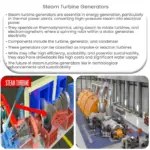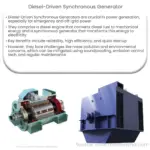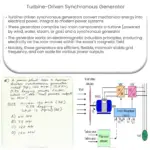How do power plants generate electricity with generators?
Electricity is generated by power plants as they convert mechanical energy into electrical energy. This process is made possible with the help of generators. A generator is a device that converts mechanical energy into electrical energy by using the principle of electromagnetic induction. The mechanical energy is provided to the generator by an external source, such as a steam turbine, a gas turbine or a diesel engine. The spinning of the turbine, driven by the energy source, causes the generator to rotate, thereby generating electrical energy.
The role of generators in power plant operations
Generators play a crucial role in the operation of power plants. They are responsible for producing electricity that can be distributed to homes, businesses and industries. The size of the generator depends on the capacity of the power plant and the amount of electricity that needs to be generated. The generator is connected to the power grid and is responsible for maintaining a steady flow of electrical power to meet the demand of consumers. In addition, generators also act as a backup power source in case of a power outage or an emergency situation.
Applications of generators in different types of power plants
Generators are used in different types of power plants, each with its unique energy source. Coal-fired power plants use steam turbines to produce mechanical energy that is then converted into electrical energy by generators. Natural gas power plants use gas turbines and diesel engines as the energy source to drive the generators. Nuclear power plants use nuclear reactors to produce heat, which is used to generate steam to drive turbines and produce electricity with generators. Renewable energy sources such as wind, hydro and solar power plants also use generators to convert mechanical energy into electrical energy.
Understanding the mechanics of electricity production with generators
The process of generating electricity with generators involves several steps. Firstly, an external source of energy such as steam, gas or wind is used to drive a turbine. The turbine converts the mechanical energy into rotational energy. The rotational energy is then transferred to the generator, which converts the rotational energy into electrical energy through electromagnetic induction. The electrical energy is then transmitted to the power grid for distribution to consumers. The efficiency of the generator depends on the amount of energy input and the amount of electrical energy output. Maintaining the generator and ensuring optimal operating conditions is essential for efficient and reliable power generation.




